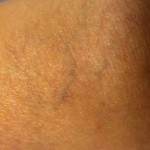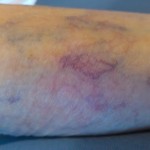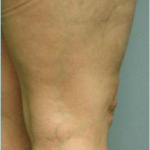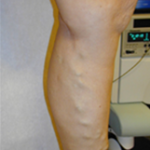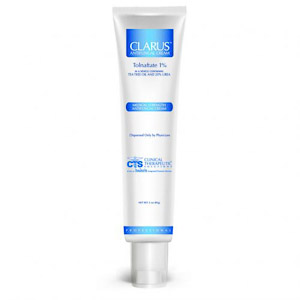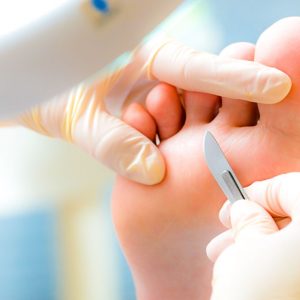Varicose, Reticular, and Spider Veins
Varicose, reticular, and spider veins can all cause unsightly blemishes on the legs. Each is a little different, but the causes are the same. They are produced by an increase in the venous pressure. Veins unlike arteries have a system of valves to halt the back flow of blood. Veins are not under pressure like the arteries. Muscle contractions along the course of the veins squishes the blood back toward the heart, valves make this a one way canal. When the valves fail, blood is allowed to pool. When we are walking or moving the muscles increase the pressure around our veins pushing the blood up, returning it to our heart. If the valves do not help catch the blood, venous pressure increases and veins become more visible as varicose, reticular, or spider veins.
- Fine Spider veins both red and purple
- Red And purple Spider Veins
- Reticular Veins behind the knee
- Varicose Veins of the Lower Leg
Varicose veins are deeper, larger, contorted, and typically less colored. Varicose veins can not be treated superficially with a laser. Sclerotherapy or endovenous thermal ablation treatments are used with pleasing results. Sclerotherapy requires a chemical to be injected into the vein, this chemical then reduces the pressure in side the vein and the bulge disappears. Endovenous thermal ablation requires a laser to be inserted into the vein so it can be used to cauterize the vein while inside the vein.
In the laser treatment of reticular and spider veins, the parameters on the laser must be set at a higher level than some other treatments. These treatments require cooling of the skin prior to and after each burst of the laser. This protects and numbs the area. These treatments can cause mild pain, but do not require anesthesia. There is no down time or post operative care. During the treatment of reticular or spider veins, the laser passes through the superficial skin to the vessels. The vessels are filled with blood giving it the red or purple color, the hemoglobin in the blood absorbs the energy from the laser quickly and cauterizes the veins. When the 1064nm wavelength contacts the hemoglobin it is similar to the sunshine on blacktop, the light is highly absorbed generating enough heat to cauterize the small vessels. It is not uncommon to have a browning or hyperpigmentation in the area where the treatments were done. These can be worse with sun exposure. It is important to limit sun exposure after these treatments by clothing or 50 SPF sunblock.
- Fluence– Power over a set time to a set amount of area. Measured in Joules/cm2; Joules = Watts x Time
- Pulse Width– Measures the length of time a laser is exposing the target tissue. This with the fluence, spot size, and wavelength determine how much energy is delivered to the targets.
- Spot Size– Refers to the diameter of the laser beam and helps control the depth the laser will travel through the tissues
- Wavelength- is generated by the materials used to generate the laser beam. This is one of the most important characteristics of the laser because it determines how much energy is absorbed by particular targets in the tissue and how deep the laser will travel through the tissues.
Many companies will claim a high maximum amount of power without stating a spot size or pulse width. Potential patients should make sure they select the right doctor for their treatment. A spot size and wavelength are the most important factors in determining the penetration of the laser in to the tissues. The 1064nm wavelength has one of the best penetrations of any laser on the market, making it very versatile and the choice of many. If the laser is capable of meeting the effective parameters, it can be used to treat hair removal, onychomycosis, spider veins, reticular veins, erythema, skin rejuvenation, scar reduction, and many other conditions.

